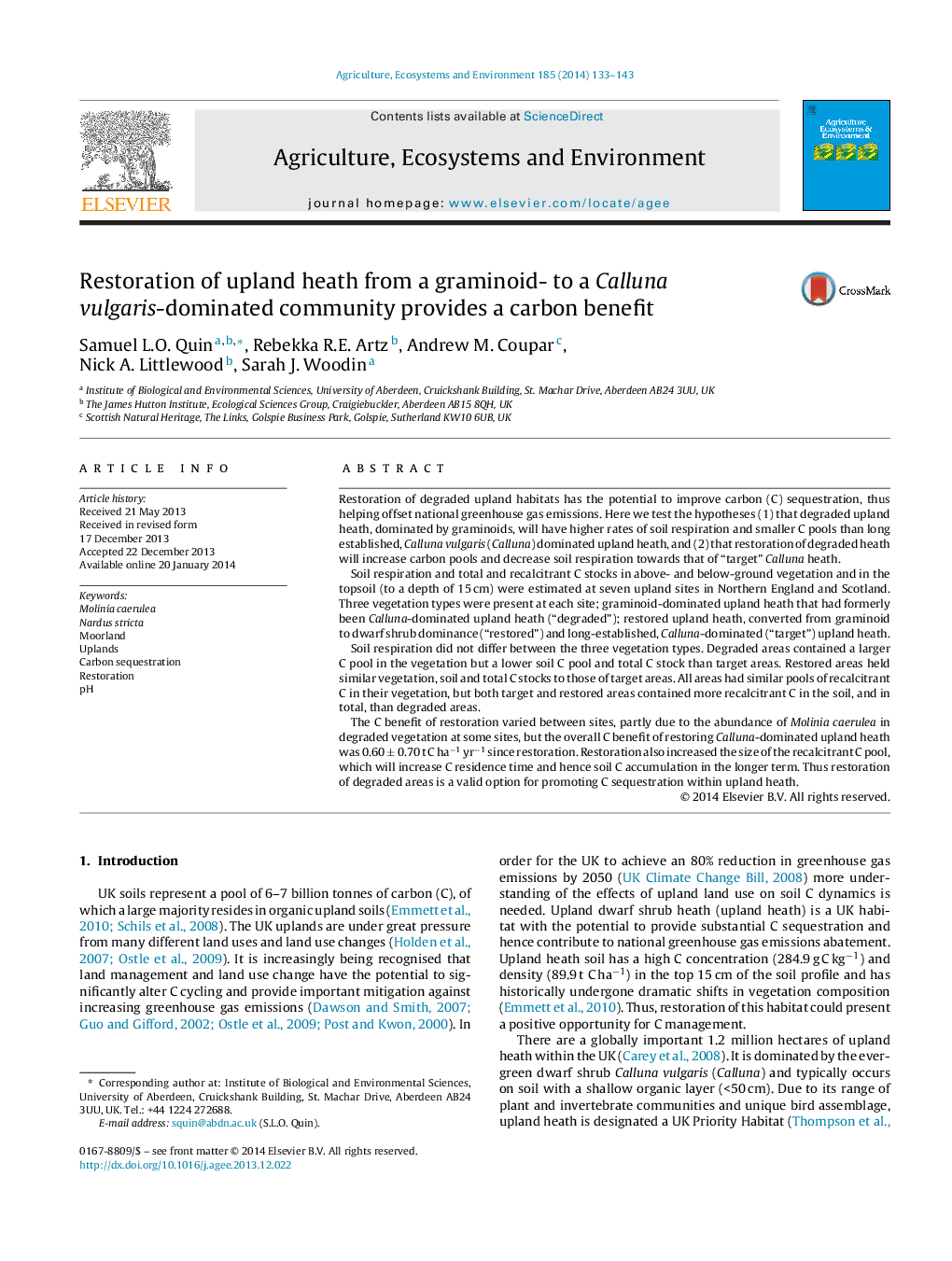| Article ID | Journal | Published Year | Pages | File Type |
|---|---|---|---|---|
| 2414075 | Agriculture, Ecosystems & Environment | 2014 | 11 Pages |
•Carbon (C) stocks in three upland heath vegetation types were compared across seven UK sites.•Graminoid-dominated (degraded), Calluna vulgaris-dominated (target) and actively restored heath were compared.•Degraded heath had lower total C stock (vegetation and soil to 15 cm depth) than target heath.•Restoration provided a C benefit of 0.60 ± 0.70 t C ha−1 yr−1 (since restoration).•Potential for C accumulation within upland heath is an additional justification for vegetation restoration.
Restoration of degraded upland habitats has the potential to improve carbon (C) sequestration, thus helping offset national greenhouse gas emissions. Here we test the hypotheses (1) that degraded upland heath, dominated by graminoids, will have higher rates of soil respiration and smaller C pools than long established, Calluna vulgaris (Calluna) dominated upland heath, and (2) that restoration of degraded heath will increase carbon pools and decrease soil respiration towards that of “target” Calluna heath.Soil respiration and total and recalcitrant C stocks in above- and below-ground vegetation and in the topsoil (to a depth of 15 cm) were estimated at seven upland sites in Northern England and Scotland. Three vegetation types were present at each site; graminoid-dominated upland heath that had formerly been Calluna-dominated upland heath (“degraded”); restored upland heath, converted from graminoid to dwarf shrub dominance (“restored”) and long-established, Calluna-dominated (“target”) upland heath.Soil respiration did not differ between the three vegetation types. Degraded areas contained a larger C pool in the vegetation but a lower soil C pool and total C stock than target areas. Restored areas held similar vegetation, soil and total C stocks to those of target areas. All areas had similar pools of recalcitrant C in their vegetation, but both target and restored areas contained more recalcitrant C in the soil, and in total, than degraded areas.The C benefit of restoration varied between sites, partly due to the abundance of Molinia caerulea in degraded vegetation at some sites, but the overall C benefit of restoring Calluna-dominated upland heath was 0.60 ± 0.70 t C ha−1 yr−1 since restoration. Restoration also increased the size of the recalcitrant C pool, which will increase C residence time and hence soil C accumulation in the longer term. Thus restoration of degraded areas is a valid option for promoting C sequestration within upland heath.
